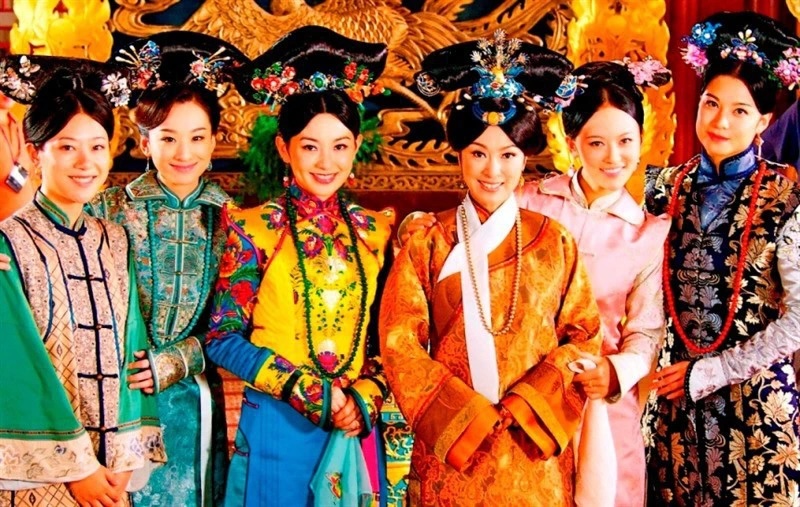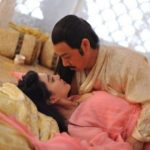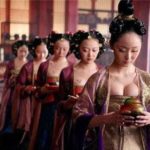The emperors of the Qing Dynasty were famous for their large and complex harem, but the number of concubines of Emperor Kangxi was truly exceptional. According to “Complete Biography of Kangxi,” an important historical work, his harem consisted of 49 consorts and 67 official concubines. If we include the lower-ranking servants in the palace, the number would be at least 200. In terms of offspring, Kangxi had a total of 55 children, including 35 princes and 20 princesses.
What is remarkable is that even in his old age, Kangxi continued to select beauties from the Jiangnan region to serve in his palace, although not for the purpose of producing offspring. This story demonstrates the extent of his romantic and indulgent nature. Not only was he a strong leader, but Kangxi also became a symbol of extravagance and refined pleasure in his dynasty.
Kangxi, the emperor who had a total of 4 empresses
Due to political factors, he had to marry at the age of 12. His first empress was Empress Xiaoxianchun, known as the Filial and Virtuous Empress. Although she entered the palace at a very young age, she gradually demonstrated her good character and graceful demeanor. She greatly assisted the emperor in managing the harem and always respected the Empress Dowager and Empress. The relationship between the emperor and empress was very harmonious.

However, this young empress was not fortunate. She gave birth to two sons for Kangxi, but the first son died after only 4 years. When she gave birth to the second son, she died at the age of 21 due to postpartum hemorrhage. Her death left a deep sorrow in Kangxi’s heart. Although he had many other concubines later on, none of them were treated with the same respect as Empress Xiaoxianchun. In fact, he even broke the norm and brought his motherless newborn child into the imperial palace to raise and designate him as the Crown Prince at the age of 2.
After the empress’s death, Kangxi did not want to marry again. However, the Empress Dowager Xiao Zhuang forced him to have a new empress. Therefore, 3 years after her death, he appointed a consort from the Niohuru clan as his new empress. But just 6 months after her coronation, the new empress also passed away, and the cause of her death was not recorded in history.
The third empress, Empress Donggiya, was appointed as the Imperial Noble Consort and managed the harem after the death of the previous empress. She only gave birth to one princess, but unfortunately, the princess also died shortly after birth. Due to this immense sadness, Empress Donggiya’s health declined. Kangxi hoped to alleviate her grief by “marrying” her and appointing her as empress. However, the tragedy continued when Empress Donggiya passed away on the same day of her appointment. This incident turned the empress’s crowning ceremony into a funeral, and from then on, Kangxi decided not to appoint any more empresses.
Only when Kangxi passed away did his son, Emperor Yongzheng, ascend to the throne and honored his mother, Empress Xiaoyiren, as the Empress Dowager, making her the fourth empress of Kangxi, although he did not live to witness this.

An extensive array of consorts
The Ming Dynasty limited the number of consorts to no more than 19. Most emperors of the Ming Dynasty had only a few concubines, such as Emperor Hongzhi, who remained faithful to the regime’s principle of “one wife, one husband.” In contrast, the Qing Dynasty required all women to be selected by the emperor before getting married. The Qing emperors had the right to choose Han women, with no fewer than 10 consorts, and Kangxi had the largest number.
During Kangxi’s reign, there were nearly 70 consorts officially appointed, but this number is only an estimate based on the number of tombs in the imperial cemetery. The actual figures have not been definitively confirmed by any historians. In his harem, there were 49 high-ranking consorts, 67 concubines with official titles, and a substantial number of lower-ranking concubines referred to as “attendants” or “ordinary attendants,” which certainly exceeded 200.
Furthermore, Kangxi frequently summoned beauties from the Jiangnan region to the palace, not for the purpose of producing more princes and princesses, but rather due to his fascination with their beauty. During his trips to Jiangnan, which was known as “the land of mountains and rivers,” he was always captivated by the beauty of the local girls.
Kangxi, a romantic emperor with genuine sincerity
He treated his concubines with genuine affection and care. During his reign, he often embarked on trips, and whenever he visited a particular locality, he would have the local specialties sent back to the beloved consorts awaiting his return in the harem.
When his first empress, Empress Xiaoxianchun, passed away, Kangxi ceased all state affairs for five days to hold a mourning ceremony. During the 25 days of the mourning period, the emperor devoted 20 days to mourning. And when Empress Niohuru passed away, his grief was equally profound. He spent hours from early morning until noon sitting by her coffin, immersed in sorrow.
For other consorts, Kangxi also made careful arrangements for their future after his passing. He once ordered the burial of two empresses in the imperial cemetery at Changling, so after his death, the subsequent deceased consorts were also buried there. Thus, Kangxi’s imperial tomb became the final resting place for many empresses.

Kangxi, a romantic emperor with unwavering principles
In general, being romantic and amorous is often associated with tragic consequences for monarchs. For example, the Tru Vuong (Supreme King) was bewitched by Dak Ky, leading to the downfall of the Tru Dynasty, or King Ngo Phu Sai succumbed to the beauty of Tay Thi, allowing Viet King Cau Bien to seize the opportunity to regain power. However, this was not the case for Emperor Kangxi of the Qing Dynasty.
Despite being surrounded by many beauties, he remained clear-minded when it came to important national matters. A Western missionary recalled that on one occasion, when the emperor visited Nanjing, seven beauties were presented to him. However, he only glanced at them once and then declined, punishing all those who dared to present them. This demonstrates his high vigilance against the intentions of the nobles who sought to deceive the emperor using beauty.
Another close confidant recounted that when the emperor arrived in Khanh Do, the Jiang Dong Court tried to offer him four beautiful girls. But the emperor showed great anger, and after thorough investigation, it was discovered that this had happened to many officials under his rule. He issued a strict punishment against this official.
What sets Kangxi apart is his ability to maintain a firm stance and not let personal emotions cloud his judgment, making him one of the rare enlightened rulers in the history of imperial China.



































